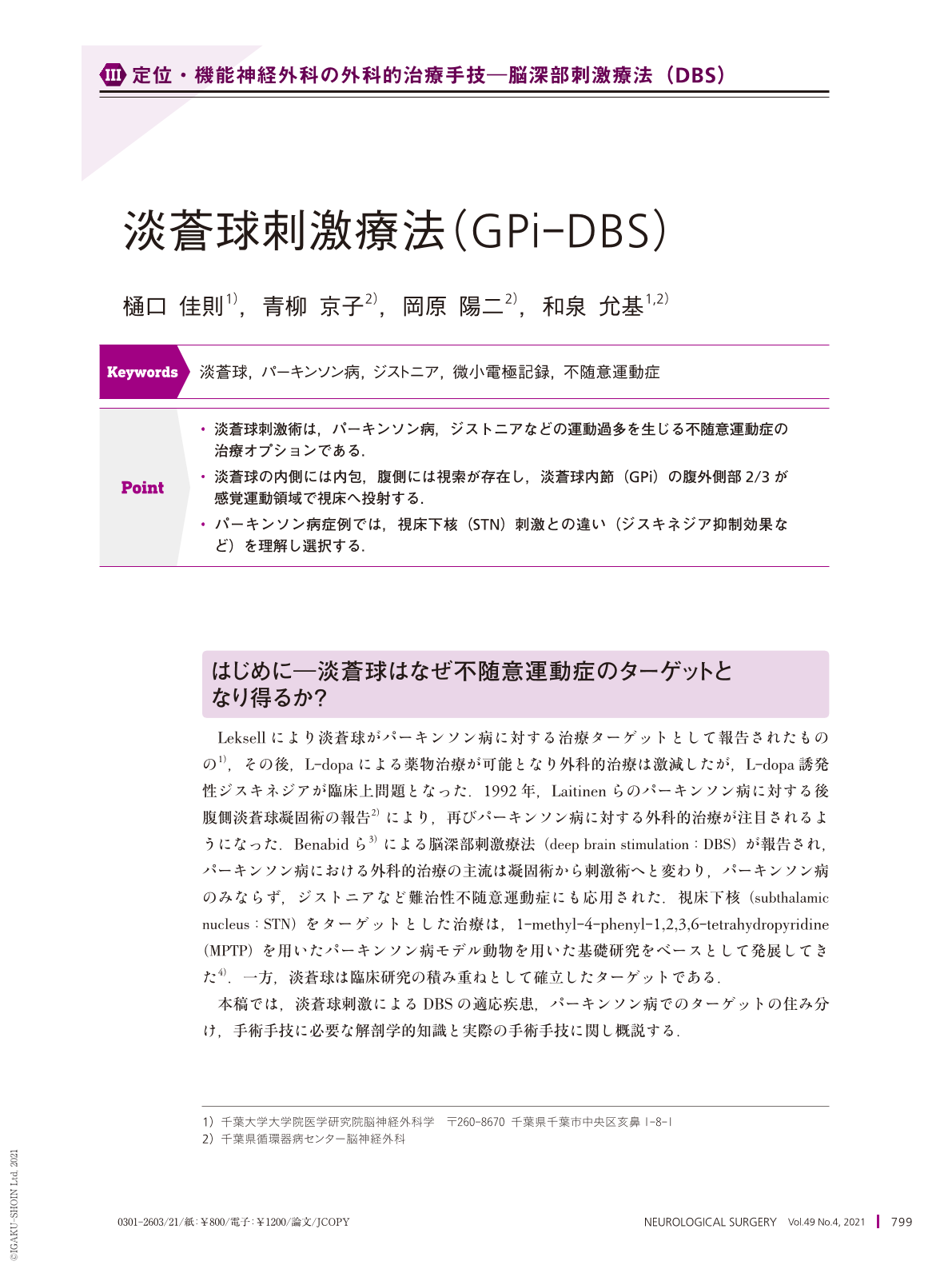1 0 0 0 淡蒼球刺激療法(GPi-DBS)
1 0 0 0 OA 椎骨脳底動脈系頭蓋内動脈解離の保存的治療例における画像所見の経時的変化と長期的転帰
- 著者
- 小野 純一 樋口 佳則 町田 利生 松田 信二 石毛 聡 永野 修 田島 洋佑
- 出版者
- 一般社団法人 日本脳卒中の外科学会
- 雑誌
- 脳卒中の外科 (ISSN:09145508)
- 巻号頁・発行日
- vol.43, no.2, pp.118-124, 2015 (Released:2015-05-27)
- 参考文献数
- 19
The natural history of intracranial arterial dissection is not well known. This study was conducted to elucidate the serial changes of radiographic findings and the long-term outcomes in both hemorrhagic and non-hemorrhagic patients who underwent intracranial vertebrobasilar artery dissection.Among 200 patients who underwent intracranial arterial dissection of the vertebrobasilar system, 99 (49.5%) were conservatively managed. These patients were divided into two groups: the hemorrhagic group (H, subarachnoid hemorrhage; n = 24 patients) and non-hemorrhagic group (NH, ischemia or headache; n = 75). Age, site of dissection, initial radiological findings and serial changes, follow-up period, and long-term outcome were analyzed. Outcomes were evaluated using the Glasgow Outcome Scale.Results: The median ages were 54 and 52 years in the H and NH groups, respectively. In both groups, the vertebral artery was most commonly affected, followed by the basilar artery. Regarding radiographic findings, the pearl-and-string sign was the most common initial finding in the H group. Conversely, tapering, narrowing, or occlusion was the most common finding in the NH group. As for serial changes in radiographic findings, no change was most frequent in both groups, followed by improvement. These changes mostly occurred within a few months in the H group but over several years in the NH group. The mean follow-up periods were 7.2 and 5.7 years in the H and NH groups, respectively. Regarding long-term outcomes, in the H group, 15 patients (62.5%) had a good recovery, and 7 (29.2%) died. In the NH group, 58 patients (77.5%) recovered, and 7 (9.3%) died. The cause of poor outcome was initial hemorrhage or subsequent rupture in the H group. Poor outcomes in the NH group were primarily due to systemic problems.These results demonstrate the long-term radiological changes and outcomes associated with the intracranial arterial dissection of the vertebrobasilar system. However, these findings are insufficient to argue the natural history of this disease because patients who received surgical treatment were excluded from this study.
